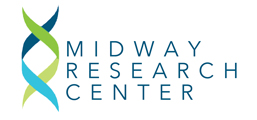Lipodystrophy refers to the changes in body fat that affect some people with HIV. Lipodystrophy can include: buildup of body fat (i.e. buffalo hump) and/or loss of body fat (i.e. facial lipoatrophy).
A person with HIV can have fat loss or fat buildup or both. Whether the changes are obvious to see or not noticeable depends on the degree of fat loss or fat buildup.
What causes lipodystrophy?
The exact cause of lipodystrophy is unknown. It may be due to HIV infection or medicines used to treat HIV. Newer HIV medicines are less likely to cause the condition than HIV medicines developed in the past. Many people with HIV never develop lipodystrophy.
What are risk factors of lipodystrophy?
- Age: Older people are at higher risk.
- Race: Whites have the highest risk.
- Gender: Men are more likely to have fat loss in the arms and legs. Women are more likely to have buildup of breast and abdominal fat.
- Length and severity of HIV infection: The risk is higher with longer and more severe HIV infection.
Is there a cure for lipodystrophy?
There isn’t a cure for lipodystrophy, but switching HIV medicines may help. Other ways to manage lipodystrophy include liposuction (surgical removal of fat) and injections of fat or a fat-like substance as a filler to make up for fat loss in the face (Sculptra). There are some medicines that may help lessen the effects of lipodystrophy. For example, tesamorelin (brand name: Egrifta) is a medicine used to reduce the buildup of abdominal fat due to lipodystrophy. A healthy diet and daily exercise may help to build muscle and reduce fat buildup.

